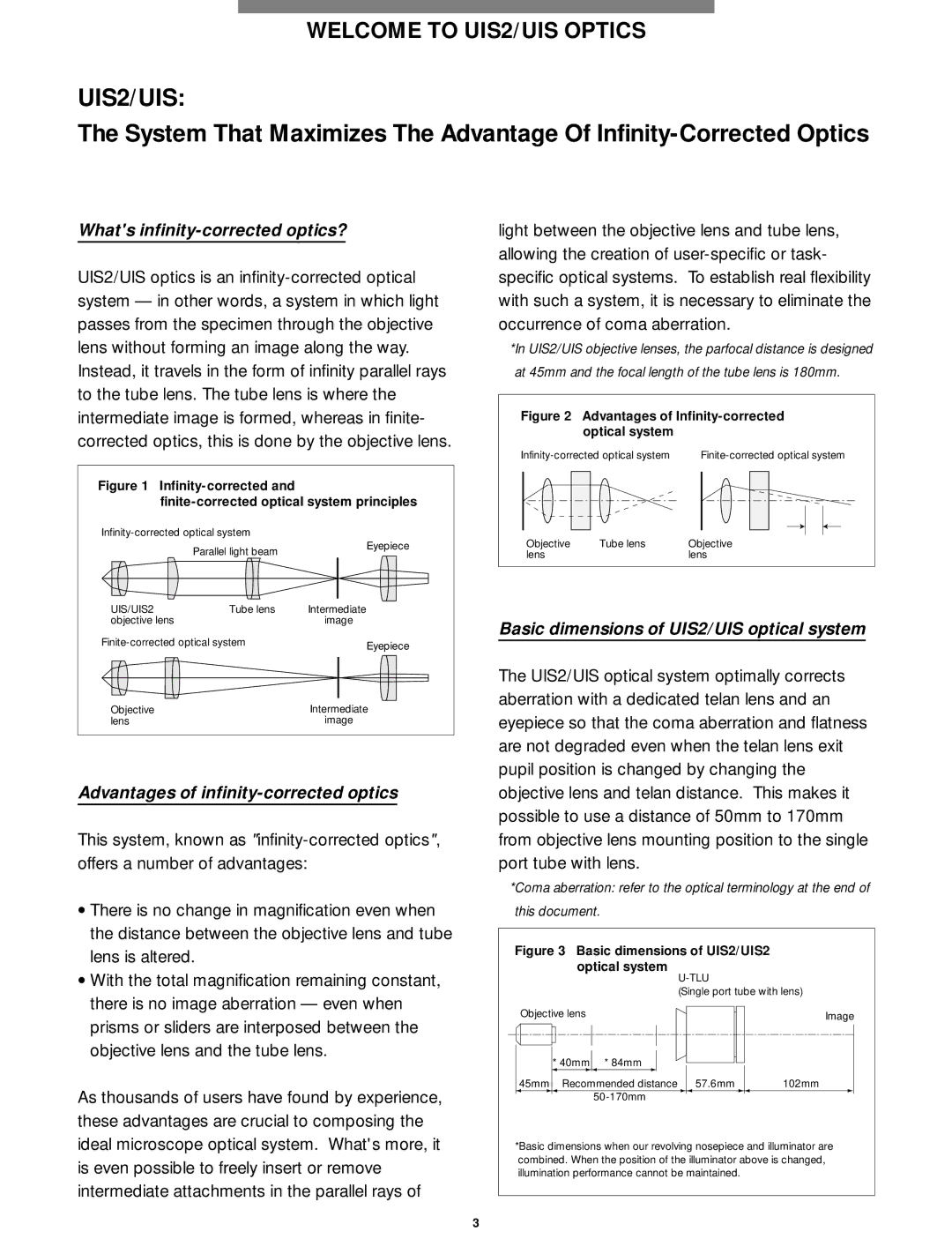
WELCOME TO UIS2/UIS OPTICS
UIS2/UIS:
The System That Maximizes The Advantage Of
What's infinity-corrected optics?
UIS2/UIS optics is an
Figure 1 |
| |
|
| |
| ||
| Parallel light beam | Eyepiece |
|
| |
UIS/UIS2 | Tube lens | Intermediate |
objective lens | image | |
Eyepiece | ||
|
| |
Objective |
| Intermediate |
lens |
| image |
Advantages of infinity-corrected optics
This system, known as
light between the objective lens and tube lens, allowing the creation of
*In UIS2/UIS objective lenses, the parfocal distance is designed
at 45mm and the focal length of the tube lens is 180mm.
Figure 2 Advantages of Infinity-corrected optical system
|
|
|
|
|
|
|
|
|
|
|
|
|
|
|
|
|
|
|
|
|
|
|
|
|
|
|
|
|
|
|
|
|
|
|
|
|
|
|
|
|
|
|
|
|
|
|
|
Objective | Tube lens | Objective |
lens |
| lens |
Basic dimensions of UIS2/UIS optical system
The UIS2/UIS optical system optimally corrects aberration with a dedicated telan lens and an eyepiece so that the coma aberration and flatness are not degraded even when the telan lens exit pupil position is changed by changing the objective lens and telan distance. This makes it possible to use a distance of 50mm to 170mm from objective lens mounting position to the single port tube with lens.
*Coma aberration: refer to the optical terminology at the end of
•There is no change in magnification even when the distance between the objective lens and tube lens is altered.
•With the total magnification remaining constant, there is no image aberration — even when prisms or sliders are interposed between the objective lens and the tube lens.
As thousands of users have found by experience, these advantages are crucial to composing the ideal microscope optical system. What's more, it is even possible to freely insert or remove intermediate attachments in the parallel rays of
this document.
Figure 3 Basic dimensions of UIS2/UIS2 optical system
U-TLU
(Single port tube with lens)
Objective lens | Image | ||||
|
|
|
|
|
|
|
|
|
|
|
|
45mm | * 40mm | * 84mm |
|
|
|
Recommended distance | 57.6mm | 102mm | |||
|
|
|
| ||
*Basic dimensions when our revolving nosepiece and illuminator are combined. When the position of the illuminator above is changed, illumination performance cannot be maintained.
3
